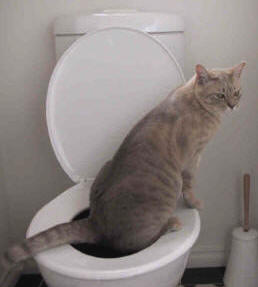Avoid Flush Cat Poop Down Your Toilet - Protect Your Pipes Infrastructure
Avoid Flush Cat Poop Down Your Toilet - Protect Your Pipes Infrastructure
Blog Article
Everyone will have their personal conception in relation to Can You Flush Cat Poop Down The Toilet?.

Introduction
As pet cat proprietors, it's necessary to bear in mind how we throw away our feline friends' waste. While it might appear practical to flush feline poop down the commode, this method can have harmful repercussions for both the atmosphere and human health and wellness.
Alternatives to Flushing
The good news is, there are safer and a lot more responsible means to deal with cat poop. Take into consideration the complying with options:
1. Scoop and Dispose in Trash
The most typical technique of taking care of feline poop is to scoop it right into a naturally degradable bag and toss it in the trash. Be sure to use a specialized clutter scoop and get rid of the waste quickly.
2. Use Biodegradable Litter
Go with eco-friendly feline clutter made from products such as corn or wheat. These clutters are environmentally friendly and can be securely taken care of in the garbage.
3. Bury in the Yard
If you have a backyard, think about hiding feline waste in an assigned location far from vegetable yards and water sources. Make sure to dig deep adequate to prevent contamination of groundwater.
4. Install a Pet Waste Disposal System
Invest in a family pet garbage disposal system specifically made for feline waste. These systems use enzymes to break down the waste, reducing odor and environmental impact.
Wellness Risks
In addition to environmental issues, purging cat waste can likewise pose health and wellness risks to people. Pet cat feces might contain Toxoplasma gondii, a bloodsucker that can cause toxoplasmosis-- a potentially serious health problem, especially for pregnant females and people with weakened immune systems.
Ecological Impact
Flushing feline poop introduces unsafe virus and bloodsuckers right into the water, presenting a significant threat to water ecosystems. These pollutants can adversely affect aquatic life and compromise water quality.
Conclusion
Responsible pet possession extends past supplying food and shelter-- it likewise entails proper waste administration. By avoiding purging feline poop down the commode and selecting alternative disposal techniques, we can minimize our ecological impact and secure human health.
Why Can’t I Flush Cat Poop?
It Spreads a Parasite
Cats are frequently infected with a parasite called toxoplasma gondii. The parasite causes an infection called toxoplasmosis. It is usually harmless to cats. The parasite only uses cat poop as a host for its eggs. Otherwise, the cat’s immune system usually keeps the infection at low enough levels to maintain its own health. But it does not stop the develop of eggs. These eggs are tiny and surprisingly tough. They may survive for a year before they begin to grow. But that’s the problem.
Our wastewater system is not designed to deal with toxoplasmosis eggs. Instead, most eggs will flush from your toilet into sewers and wastewater management plants. After the sewage is treated for many other harmful things in it, it is typically released into local rivers, lakes, or oceans. Here, the toxoplasmosis eggs can find new hosts, including starfish, crabs, otters, and many other wildlife. For many, this is a significant risk to their health. Toxoplasmosis can also end up infecting water sources that are important for agriculture, which means our deer, pigs, and sheep can get infected too.
Is There Risk to Humans?
There can be a risk to human life from flushing cat poop down the toilet. If you do so, the parasites from your cat’s poop can end up in shellfish, game animals, or livestock. If this meat is then served raw or undercooked, the people who eat it can get sick.
In fact, according to the CDC, 40 million people in the United States are infected with toxoplasma gondii. They get it from exposure to infected seafood, or from some kind of cat poop contamination, like drinking from a stream that is contaminated or touching anything that has come into contact with cat poop. That includes just cleaning a cat litter box.
Most people who get infected with these parasites will not develop any symptoms. However, for pregnant women or for those with compromised immune systems, the parasite can cause severe health problems.
How to Handle Cat Poop
The best way to handle cat poop is actually to clean the box more often. The eggs that the parasite sheds will not become active until one to five days after the cat poops. That means that if you clean daily, you’re much less likely to come into direct contact with infectious eggs.
That said, always dispose of cat poop in the garbage and not down the toilet. Wash your hands before and after you clean the litter box, and bring the bag of poop right outside to your garbage bins.
https://trenchlesssolutionsusa.com/why-cant-i-flush-cat-poop/

We hope you enjoyed our topic on How to Dispose of Cat Poop and Litter Without Plastic Bags. Many thanks for taking the time to read our blog. Loved our write-up? Please share it. Let another person locate it. Thank you for going through it.
Source Report this page